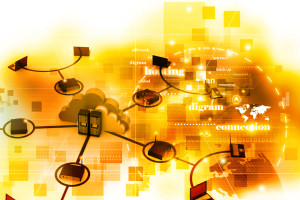
AI Seen Better Suited to IoT Than Big Data

(Hywards/Shutterstock.com)
More cold water is being thrown on the notion that AI might be the next big thing for big data. Rather, a new survey finds that AI branches such as machine learning are perceived as be more useful for applications such as Internet of Things deployments where automation tools can be used to streamline business operations.
By contrast, the survey of a thousand or so IT professionals by market research GlobalData found continuing “heavy reliance” on business intelligence tools, with 40 percent ranking BI above all other tools for analyzing data. Hence, the researcher concludes, AI is likely to play a larger role on IoT deployment than data analytics.
The downside, the survey finds, is that “with the broad market trend toward the democratization of data now well-established, such do-it-all BI software platforms have already given way to numerous smaller, more discrete ways of deriving value from enterprise data,” including direct SQL query, predictive data modelers and auto-generated data discovery visualizations.
Meanwhile, of the list of key benefits associated with IoT deployments, analytics applications such as “enhanced insight and decision-making” finished dead last among respondents, trailing considerations such as using AI to automate operations and help reduce costs.
The researcher concludes that much of the misalignment between AI and data analytics stems from centralization, which is seen as the basis of traditional BI analysis and reporting along with predictive modeling. “Where AI is most valuable, however is at the edge,” GlobalData notes. “IoT deployments need to employ tools like [machine learning], not centrally, but at the edge, close to the device itself.
“And like today’s enterprise software, those analytics endeavors should be brief and to the point, and focused on solving specific challenges,” the researcher continued.
Other branches of AI such as deep learning may prove more broadly applicable to analytics as well as IoT. In the case of deep learning, the researcher argues that combinations of smaller decision-making algorithms can be used to create “a larger, seemingly intelligent system.”
Industry veterans sometimes lump IoT together with traditional applications such as predictive analytics and big data, generally. For instance, Tom Siebel, who’s latest venture is called C3 IoT, described to Datanami earlier this year a list of emerging “vectors” that include AI, big data, cloud computing and IoT.
“Those are the horses that we’re riding, and those vectors appear to be converging,” Siebel said. “With those technologies, we’re able to solve classes of problems that were previously unsolvable.”
Recent items:
Data, Security Frameworks Emerge FOR IoT































